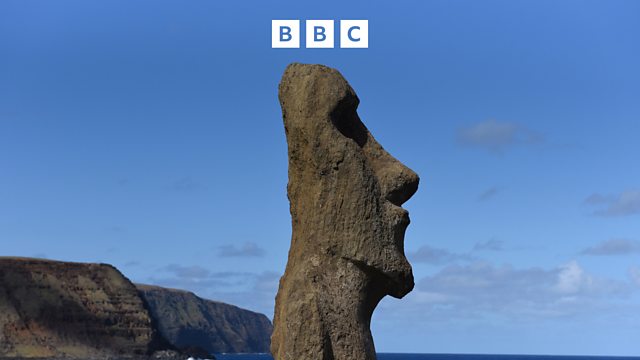Can the statues of Easter Island survive climate change?
What’s the future for Rapa Nui, its Moai and other archaeological treasures, under threat from climate change?
Hundreds of monumental human shaped statues are motionless, and exposed to the elements, on Rapa Nui - also known as Easter Island. A name that dates back to 1722, when a Dutch explorer first saw it on Easter Sunday.
The statues, or Moai, were there centuries before that and are sacred to the Rapa Nui people.
They have also become a world famous tourist attraction and can be found in multiple outdoor locations across the small island. They are heavy and huge - sizes range from 1 to 20 metres tall. Some are upright on platforms, others are toppled over and broken.
Over the years, global weather has become more extreme and is having a devastating effect. Can the statues of Easter Island survive climate change?
Contributors:
Sonia Haoa Cardinali, Archaeologist with the Mata Ki Te Rangi Foundation and coordinator of Easter Island's national monuments, Rapa Nui
Roberto Rondanelli, Meteorologist and Climate Scientist at the Department of Geophysics, University of Chile
Jo Anne Van Tilburg, Archaeologist and the Director of the Easter Island Statue Project
Pilar Vicuña, culture programme officer, Unesco (Santiago de Chile),
Presenter: Charmaine Cozier
Producers: Lorna Reader and Jill Collins
Production co-ordinators: Liam Morrey and Tim Fernley
Editor: Tara McDermott
Last on
Featured
-
.
Broadcasts
- Thu 1 Aug 2024 07:06GMT±«Óãtv World Service
- Thu 1 Aug 2024 14:06GMT±«Óãtv World Service
- Thu 1 Aug 2024 17:06GMT±«Óãtv World Service East and Southern Africa & West and Central Africa only
- Thu 1 Aug 2024 21:06GMT±«Óãtv World Service except East and Southern Africa & West and Central Africa
- Sat 3 Aug 2024 18:06GMT±«Óãtv World Service News Internet
- Sun 4 Aug 2024 00:06GMT±«Óãtv World Service
Podcast
-
![]()
The Inquiry
Getting beyond the headlines to explore the forces and ideas shaping the world


